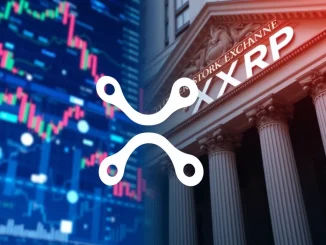
The world of finance is witnessing a pivotal moment. The U.S. Office of the Comptroller of the Currency (OCC) has issued new guidance that significantly impacts how US banks crypto interactions can occur. This development marks a substantial shift, potentially opening doors for millions to access digital assets through their trusted financial institutions.
What Does the Latest OCC Crypto Guidance Entail?
Breaking news from the OCC confirms a more permissive stance on banks engaging with digital assets. The core of the recent OCC crypto guidance states that national banks and federal savings associations are permitted to buy and sell cryptocurrency assets for their customers upon request. This isn’t just about holding assets; it explicitly allows for trading activities.
Key takeaways from the guidance include:
- Banks can facilitate the buying and selling of crypto assets on behalf of customers.
- They can hold these assets in custody.
- Outsourcing custody and execution to third-party specialists is permitted.
This guidance builds upon previous steps taken by the OCC, including lifting a ban on certain crypto services and easing regulations that may have previously disadvantaged customers dealing with digital currencies.
How Does This Allow Banks to Trade Crypto?
The permission for banks trade crypto directly addresses a long-standing question in the market. Previously, regulatory uncertainty created hesitation. Now, the OCC has clarified that acting on customer requests to trade is within the scope of banking activities, provided safety and soundness requirements are met.
This means:
| Action | Previous Stance (Often Ambiguous/Restrictive) | New OCC Guidance |
|---|---|---|
| Holding Crypto Custody | Limited/Unclear | Permitted |
| Buying/Selling Crypto for Customers | Generally Prohibited/Discouraged | Permitted upon customer request |
| Outsourcing Crypto Services | Unclear | Permitted for custody and execution |
The emphasis remains on banks ensuring these activities are conducted safely, securely, and in compliance with all relevant laws and regulations, including those related to anti-money laundering (AML) and countering the financing of terrorism (CFT).
What Does This Mean for Financial Institutions and Crypto Adoption?
This move by the OCC is a significant nod towards the growing importance of digital assets in the financial landscape. For financial institutions crypto integration is no longer a distant possibility but a current regulatory reality they can actively pursue. It provides a clear path for banks to meet increasing customer demand for crypto access.
Benefits for Financial Institutions:
- Opportunity to capture market share from crypto-native platforms.
- Ability to offer integrated financial services (traditional banking + crypto).
- Potential for new revenue streams.
- Staying competitive in an evolving financial ecosystem.
Challenges remain, including establishing robust compliance frameworks, developing necessary technical infrastructure, and training staff. However, the regulatory clarity from the OCC removes a major hurdle.
Expanding Banking Crypto Services
Beyond simple buying and selling, this guidance lays the groundwork for a broader expansion of banking crypto services. While the current focus is on trading and custody, it signals a regulatory openness that could lead to banks offering:
- Crypto-backed lending
- Integration of crypto into wealth management services
- Facilitating payments using stablecoins
- Providing research and advisory on digital assets
The ability to outsource allows banks to leverage the expertise of existing crypto companies, accelerating their entry into the market without needing to build complex infrastructure from scratch.
In Conclusion: A Watershed Moment
The OCC’s statement that banks can now act upon customer requests to trade crypto assets is a watershed moment for both the traditional banking sector and the cryptocurrency market. It signifies a maturing regulatory approach in the United States, acknowledging the legitimacy and demand for digital assets. While banks must navigate the complexities of security and compliance, this guidance provides the necessary regulatory cover for them to explore and expand their involvement in the crypto space, potentially bridging the gap between traditional finance and the digital asset economy for a wider audience.



